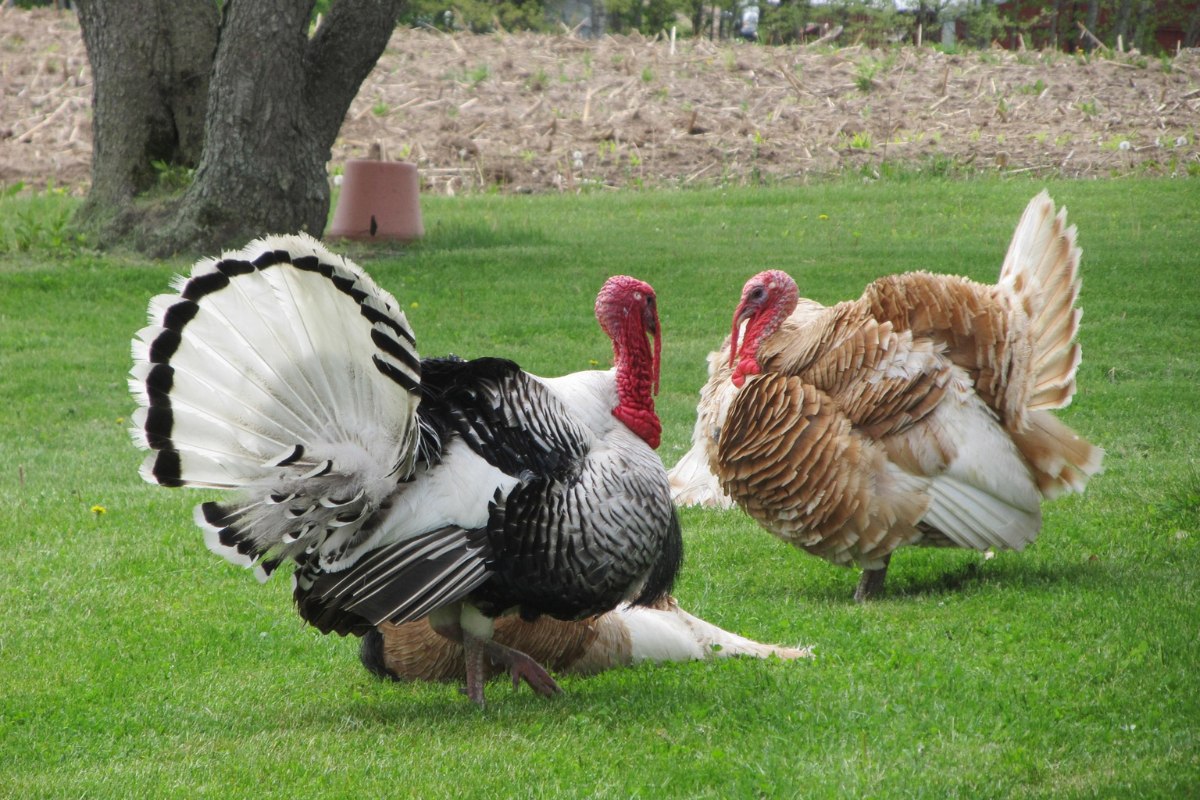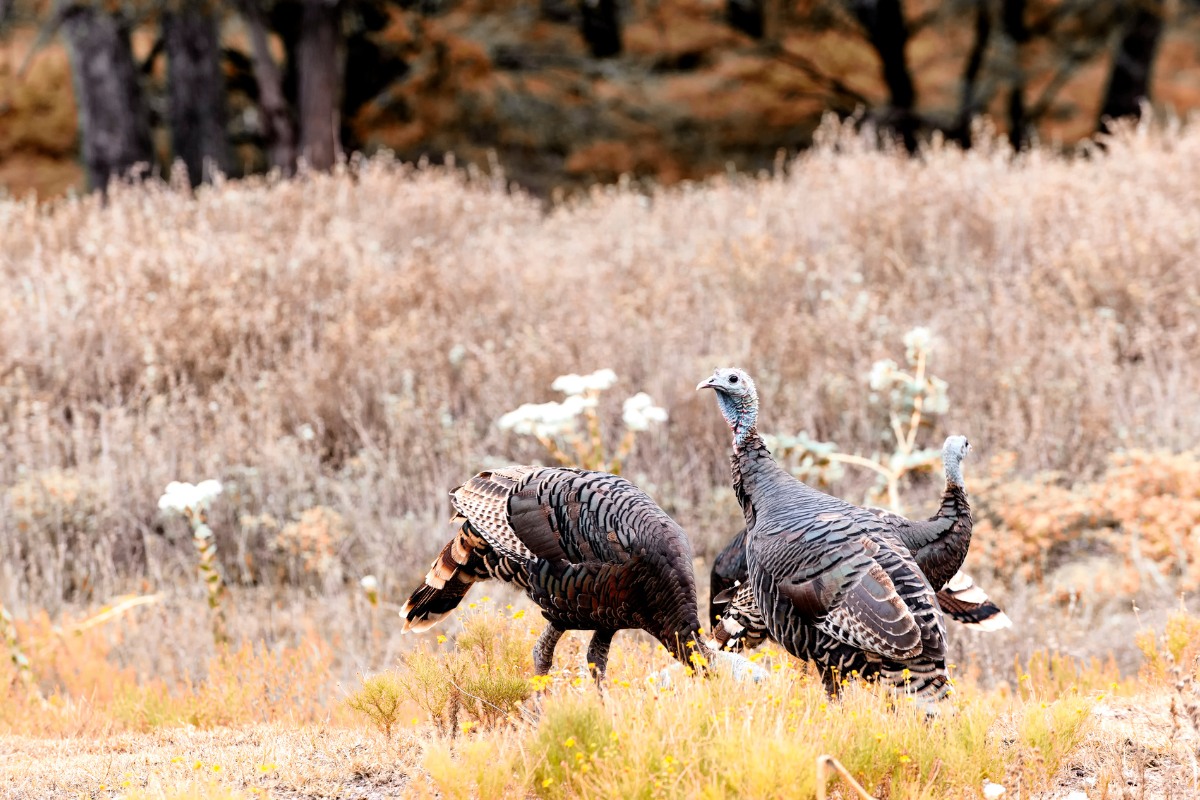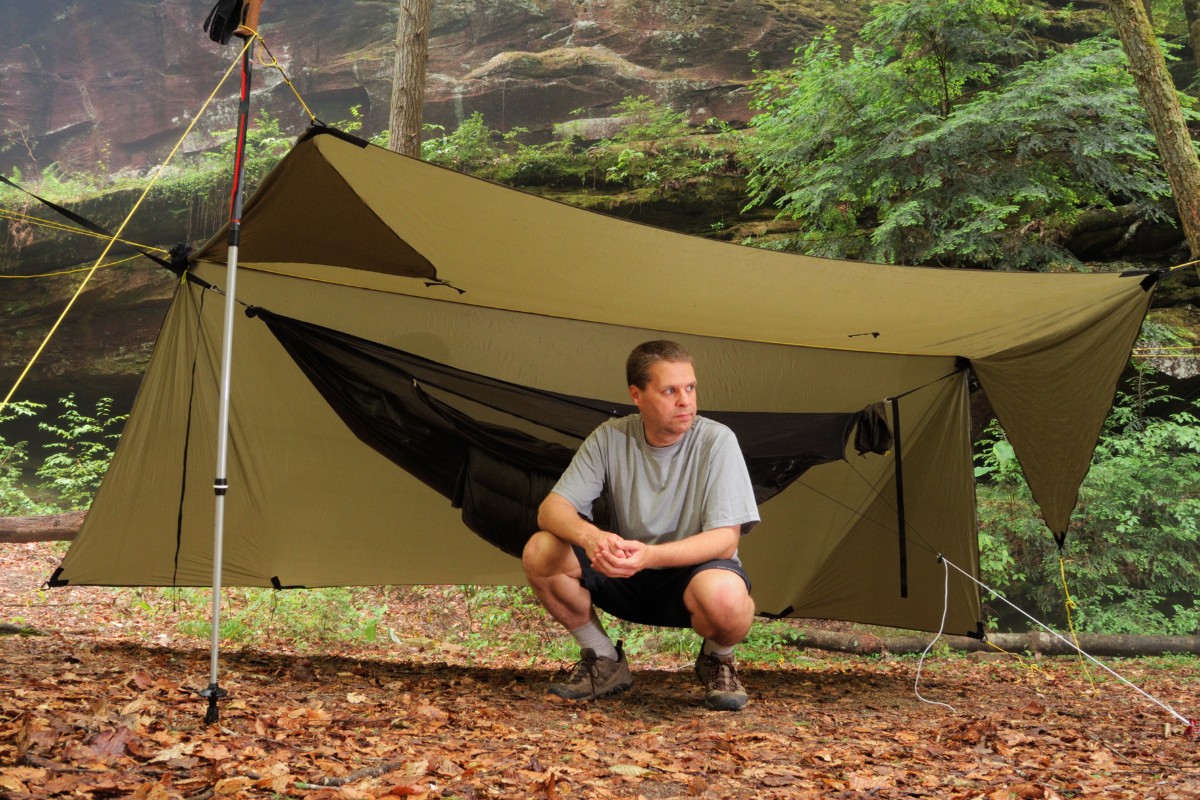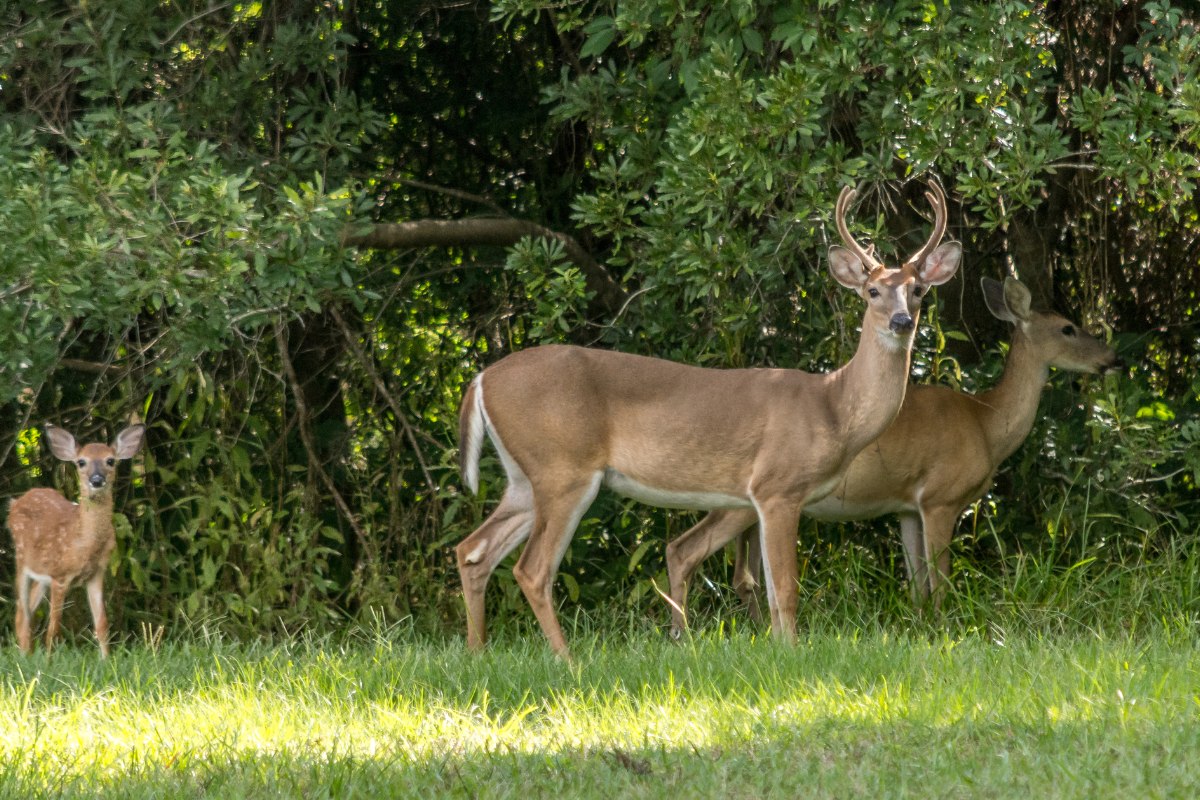Turkeys are formidable adversaries but the equipment needed to hunt them does not have to be anything extravagant. The basic gear for turkey hunting is really quite simple and effective once you are familiar and proficient with it.
Camouflage/Clothing
A turkey’s eyesight is one of the sharpest in the woods and is sure to pick you off and end your hunt in a hurry if you are not properly concealed. Head to toe coverage is a must, including a hat, facemask (paint), and gloves. A flash of skin from an exposed hand moving for your shotgun or a turn of your face can be like waving a flag to an approaching gobbler. The pattern of camouflage should match the conditions in which you are hunting although it is not an absolute necessity. For example, some hunters choose to only hunt turkeys in the spring because they love the thrill of fooling an old bird into responding to their calls and watching him gobbling and strutting into range. Therefore, the camo that they choose tends to have a little more green within the pattern so as to better fit with the new growth just beginning to emerge in March, April, and May.
Be sure to check all your clothing and gear for company logos, etc., that may present a bright or unnatural color to the turkey. Colors such as red and orange stand out and draw unnecessary attention to your setup, causing a leery gobbler to hang up out of range or flat out run the other way, usually “putting” as if laughing at your perceived feeble attempt to outwit him.
Those $300+ scent suits and carbon lined jackets, etc. are totally unnecessary for turkeys since they do not rely on their olfactory capabilities to detect danger. If you’re looking for scent control garments for deer season and want to use it during turkey as well, it can surely be done. But save it for when it matters.
Also, keep it lightweight but have a backup plan for cooler temps. During early season scouting in Virginia and even into the first weeks of the season, it is not unheard of to be leaning against the base of a tree with a skiff of snow on the ground, especially in the mountains. You can buy pants one size larger than you need to allow the flexibility of wearing sweats or a thermal base layer under them in the cooler early season, or shorts in the mid to late season. Quiet, lightweight long sleeve shirts with a fleece jacket to throw over during the early morning chill and easily removed once the sun comes up, are a great combination for you. Know your tolerance for cold/heat and remember the terrain in which you’re hunting when choosing the proper attire. Hiking up a mountain in heavy clothing will cause you to sweat. Sweat and cold/cool temperatures can make you not only uncomfortable, but become downright dangerous as hypothermia comes into play. Hyperthermia and other heat related health issues can be a concern in the late season, especially in the south, where temperatures can soar into the 90’s by early May.
It is essential to choose the right style of hunting boot for the conditions and terrain in which you will be hunting to ensure a great experience. Few things can kill the enjoyment of a hunt faster than a blister on a foot or ankle from wearing unbroken-in boots on a long hike, slick soles on steep terrain, a rolled ankle, freezing toes, or lugging what feels like 8lb weights tied to your feet up a mountain side. Unlike hunting deer from a tree stand or blind, turkey hunting usually requires more movement. You may have to relocate several times to get yourself in the right position to call that Ol’ Tom into range. Lightweight, low or uninsulated, soft-soled hiking boots with sufficient ankle support are a favorite choice because they allow your maneuverability across a variety of terrains without being too loud or weighing you down.
Weapons and Ammo
There are many things to consider when selecting the right weapon and ammunition for turkey hunting. The same shotgun you have used for pheasant, rabbit, or grouse may not be the most suitable for knocking down a big Ol’ Tom. The key factors to consider are spread or pattern density and energy delivered to the target. The greater the spread, the fewer pellets are likely to find the kill zone, and less energy equals less penetration.
There is a place for the 20 gauge in turkey hunting and the 2 3/4″ 12 gauge shell. The 20 gauge is an excellent weapon to start youngsters and newer hunters out on as it will produce significantly less recoil than the 12 gauge magnum loads. It will provide a more comfortable and enjoyable experience and encourage future involvement (name of the game). The reduction in power does put more emphasis on your setup and calling abilities as the effective kill range is reduced to ideally less than 30 yards.
But you will find the greatest chance for success lies in the 12 gauge magnum shells at 3″ and 3 1/2″ lengths. The combination of additional shot and energy means more shots make it to the target and with sufficient energy to dust a gobbler’s head at ranges up to and beyond 40 yards. This is especially important when hunting in areas with dense underbrush as wide open, clear views of a turkey’s cue ball sized head are rare and each leaf, limb, stump, etc., will reduce the number of pellets making its way down range.
Even more important though is choke size. Super-Full, Extra-Full, etc., will always produce a tighter pattern and are a must to provide the best opportunity for harvesting a turkey.
Calls
Turkey calls are an essential tool and are the direct link between the hunter and that distant bird. But choosing the right call for you can seem impossible while standing in front of the aisle at the sporting goods store looking at row after row of mouth calls, box calls, slate calls, pushers, and gobblers.
Well, traditionally there are three styles of calls: mouth/diaphragm, friction, and locator calls and each has its place in your turkey vest. Learning how to use each and at the proper time will be essential to your success in enticing a big gobbler into range.
Mouth Call
One of the favorite calls with the most success is a mouth call. This call requires a lot of practice to learn the proper techniques used to achieve basic turkey vocabulary. You are essentially using varying tongue pressures to direct air flow over a set of reeds in order to produce yelps, cuts, clucks, and purrs. The benefit of this call is that you are totally hands-free. Although many hunters use a hand to help direct a call, not needing a hand for its operation allows you to stay in the ready position and eliminates excess movements. They come in a variety of formats from a single reed to four reeds with cuts and slits in numerous shapes. The fewer the reeds, the less air required to produce a sound and the cut shapes add rasp. A “Mr. Death” 4-reed call produced by Cane Creek Calls, Inc. is often a good choice.
Friction Call
Friction calls such as a slate or “pot” call and box calls are also excellent tools for luring in an old gobbler. Slate calls consist of a surface material (typically slate, hence the name, but also commonly available in glass, acrylic, and sometimes aluminum) that is played by moving the tip of a striker (usually wood or graphite) against the surface. A common technique when working a stubborn bird is to trick him into thinking there is more than one hen calling to him. Since each call has a slightly different sound, the use of a slate in combination with say a mouth call, can really get a gobbler to think there is a party going on and he needs to get in on the action.
Another technique to use when you get a bird coming to the slate is to back off as he gets closer and switch to a mouth call so that he doesn’t spot the movement of the striker. Plus it allows you to be ready with your shotgun in advance as opposed to trying to put down a call and move into a firing position with a bird in close. The drawback to a “pot” call is its susceptibility to moisture. Rainy days or even mornings with heavy dews can render these calls unusable as a single droplet of water hitting the surface will eliminate the friction between the surface and the striker needed to play the call.
Box calls
Box calls are made of a wooden box with a movable top known as the “paddle.” The wood used to build these calls may vary from poplar, walnut, cherry, mohagony and some are coming out now in sycamore. They are played by pivoting the lid or paddle and sliding it back across the top rim of the box. Each wood and combination thereof offers a slightly different tone. As with all the calls, practice makes perfect, but these calls are the ticket to get a bird to hear you from a long way off or during those windy early spring days.
Locator Call
The last call to have is a locator call. Gobblers have an instinctual response to certain sounds they hear which gives their location away to listening hunters. Turkeys gobble at anything from barking dogs, car horns, and even the slamming gate of a garbage truck. But the most commonly heard sounds that invoke a response from a tight-lipped Tom are those of a Barred Owl, crow, and woodpecker. All of these calls are commercially available and have their place. This first call to pull out of your pocket in the morning is an owl call. Wait and hope the real thing will start things off and get that gobbler talking, but if not, a short sequence of “who cooks for you? Who cooks for you all!” usually gets the ball rolling. Sometimes your call can awaken a fury of responses from other owls, in which case, sit back and let them have at it. Just have your ears open and wait for that gobble!
Crows usually will start their cackling just before the sun comes up and gobblers find it hard to resist hollering back at them. So let them do most of the talking. However as the morning grows older, gobblers will get with their hens and go quiet or “shut up” as you might call it. Then around 9:30 am to 10 am, the hens will go to nest and the Toms start gobbling again. During this mid morning lull, a crow call can be just the ticket to getting these birds cranked up again!
Each gobbler is his own bird. Based on their experience, some may have heard every mouth call in the book and will only respond to a slate. Some may have been “hooted” at by every hunter in your county and so it’s the woodpecker call that gets him to sound off. It’s important to have a variety of calls in your vest to be able to hunt in all weather conditions, terrains, and pressure scenarios.
Hunting Vest and Seat
The final piece of equipment is a quality turkey hunting vest with a quick and easy seat deployment system. A vest with several pockets to accommodate all your calls, navigation tools, gloves, facemasks, spare coats, and ammunition is vital to success. It will keep you organized and prepared during what could amount to an all morning chase over various terrains and conditions.
The seat needs to be comfortable so that once you are in position, you can maintain that position without moving. A fidgety hunter who makes even the slightest adjustment can give the game away and end your chances with a sharp-eyed gobbler. Turkey hunting often requires redeployment again and again and again, and sometimes in a hurry. Fumbling with a cumbersome seat cushion that is hard to buckle can cost you time and one that is left dangling or comes undone too quickly will make too much noise through the brush and could spook a leery bird.
Bottom Line
So bottom line is you don’t need to spend a fortune to become a turkey hunter. What it boils down to is concealment from one of the best sets of eyes in the woods, a weapon with a dense shot pattern and knowing your effective range, practicing with the call of your choice, and having a quality vest to carry everything. Once you have that, you just have to learn how to hunt them! Easy right?








